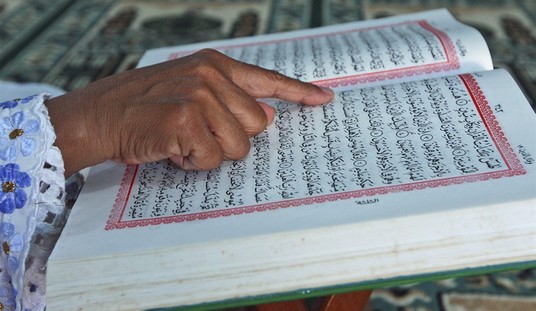Forty days ago in the Iranian province of Sistan-Baluchistan, 82 people protesting against the Iranian regime were shot dead in what human rights groups call the worst massacre since the protests began last September.
On Friday, hundreds of people gathered in the provincial capital of Zahedan to commemorate the massacre. And across the country, other groups of protesters took to the streets to remember “Bloody Friday” and call for the end of the clerical government.
More than 15,000 people have been stuffed in Iranian jails as the body count grows. At least 326 people have been killed, according to the UN, but that is almost certainly an undercount. And with the Iranian parliament calling on the judiciary to execute all 15,000 of the jailed protesters, the dead will almost certainly begin to pile up.
The authorities have had little success in tamping down protests. The gatherings are now smaller and more furtive as groups of a couple of dozen demonstrators will appear at a pre-arranged site and chant for a few minutes until the Basij — the hated morality police — show up and start hauling protesters away.
But in Sistan-Baluchistan and Kurdistan, where independence and separatist movements took root long ago, authorities often don’t try to arrest protesters. They just open fire. Not only did 82 die in Baluchistan, but another 16 died last week when authorities opened fire in Khash, another Baluchistan city.
The failure to suppress protesters across the country is a sign that the movement remains a stark challenge to the Iranian leadership. Initially centered around demands to abolish the mandatory Islamic veil, or hijab, the movement morphed into calls to overthrow the Islamic leadership.
In some parts of the country, such as the western Kurdistan province where Ms. Amini was from, protesters gather almost daily. Elsewhere, such as the capital Tehran, rallies are routinely held a couple of times a week, often in or around universities.
In the past week, 227 of the 290 lawmakers in Iran’s parliament called on the country’s judiciary to issue and carry out the death penalty for protesters. Iranian Chief Justice Gholamhossein Mohseni-Ejei asked judges to intensify and speed up sentences for hundreds of arrested protesters.
“Establishing an international investigation and accountability mechanism by the UN will both facilitate the process of holding the perpetrators accountable in the future and increase the cost of the continuous repression by the Islamic Republic,” Iran Human Rights NGO director Mahmood Amiry-Moghaddam told CNN.
That’s cold comfort for protesters who face death in the streets or while in custody. And it’s not going to help those who have been arrested and may face execution.
A young Iranian man accused of lighting a trash can on fire during a protest could face death row for “waging war against God,” reports the Washington Post. And the two female journalists who broke the story of 22-year-old Mahsa Amini’s beating death while in custody — the catalyst for the unrest — are themselves, in jail awaiting trial after being accused of working for the CIA.
“This is what justice looks like in Iran, where the trials of protesters, bystanders and chroniclers of the current uprising have begun. There is little expectation of due process in a judicial system dominated by the security services and stacked against the accused.” reports the Post. And the VOA reports that several trials are underway with more to come.
Another 276 people were charged in the central province of Markazi, its judiciary chief Abdol-Mehdi Mousavi was quoted as saying by state news agency IRNA.
However, 100 young people were released after signing pledges not to participate in any future “riots”, IRNA said.
In central Isfahan province, judicial chief Asadollah Jafari said 316 cases had been filed in connection with the recent strife.
Twelve have already gone to trial, the Tasnim news agency reported him as saying late Saturday.
Meanwhile, the protesters need more than lip service from the U.S. Joe Biden claims that if the U.S. acts too aggressively, it will damage the protesters’ cause given the hatred for the United States in Iran. The real reason for Biden’s reluctance is that he doesn’t want to close the door entirely on a new nuclear deal with Iran. Throwing the book at the Revolutionary Guards and Supreme Leader Khamenei’s cronies would set back Biden’s plans to normalize relations with the clerical fascists in Tehran.
No wonder the protesters are looking elsewhere for help.










Join the conversation as a VIP Member